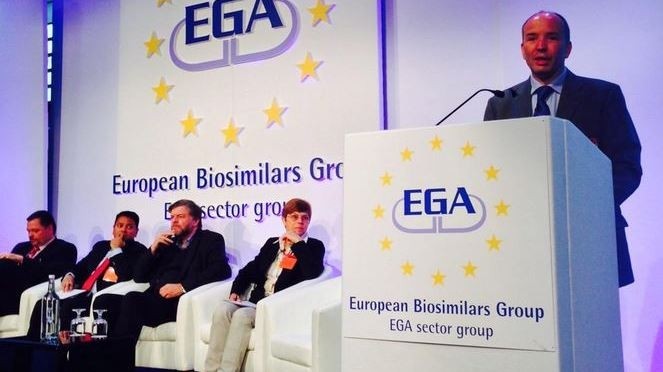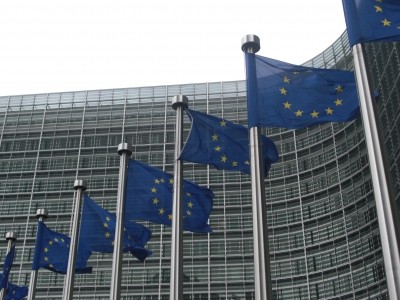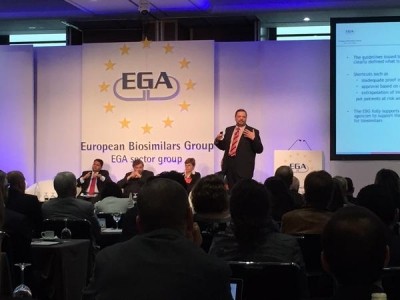EBG BIOSIMILARS 2015
Regulators: skip clinical data and extrapolate biosimilar indications

At the 13th European Generics Association-European Biosimilars Group meeting in London last week the regulators challenged the commonly held industry view that marketing submissions for biosimilars must complete a clinical trial for every indication they apply for. The decision will disappoint the marketing authorisation holders of originator biologics, and some medical groups, which have called for clinical studies for every indication.
The FDA and EMA positions run against those of the European Crohn's and Colitis Organisation and the American College of Rheumatology. These and other organisationbelieve that because biosimilars have subtle molecular differences from their reference biologics – unlike generic small molecule drugs – their safety and efficacy profiles are unpredictable, so dedicated clinical trials are necessary before approval.
The issue comes down to extrapolation of data: should a biosimilar which passed a clinical study for one of the originator biologic’s indications then be licensed for all the originator’s other indications?
In the absence of safety or efficacy data to the contrary, yes, say the European and US regulators, who say sponsors and doctors are too wedded to clinical evidence – a cruder quality tool than bioanalytical testing.
‘Extrapolation is not new’
Martina Weise, Vice-Chair of the EMA Working Party on Similar Biological Medicinal Products (BMWP), told the EGA conference that while extrapolation is “the most contentious issue” deterring doctors and patients from using biosimilars, their understanding of the risks is muddled.
The extrapolation of data “is not a new concept” in biopharma, said Weise. The statistical technique is used to demonstrate comparability of different versions of a drug every time a manufacturer changes its production technique of the same biologic.
The extent of the differences between a biosimilar and a reference biologic are comparable to those between a biologic at the time of its first approval, and the same product after manufacturing changes, she said. The latter is already covered by ICH guidelines.
Changes in the manufacturing process of gene therapies are “not a rarity – they’re the rule,” she stressed. “They’re mostly minor changes but it’s fair to say the product currently on the market is not identical to the product licensed several years ago.”
A paper from the Danish health authority measured manufacturing alterations in biologics – from switching suppliers of cell culture media to moving sites or introducing new purification steps – and counted more than 35 changes to the production of Remicade (infliximab) after its approval in 1998 until 2012.
Whether changing production methods of the same drug, or comparing a proposed biosimilar to another biologic, the usefulness of extrapolation depends on the extent of the differences observed.
“If the change does not have an impact on the specifications of the product, or if there are changes in the specification but we know they do not impact safety or efficacy, then physical, chemical and biological testing is sufficient,” said Weise.
Only when an impact on safety or efficacy is possible – for instance, when the biosimilar has different target receptors from the original – do additional data have to be provided, she said, and even then, these need not be clinical data. Instead, functional assays or PD parameters could be used.
Clinical data: ‘the bluntest tool’
The EMA’s Weise, and fellow speakers Leah Christl, Associate Director of Therapeutic Biologics within the FDA’s Center for Drug Evaluation and Research, and Peter Richardson, EMA Head of Quality, all stressed that analytical methods and functional assays are more sensitive to quality attributes and often much more valuable to regulators.
Clinical studies “are the most blunt tool we have,” said Weise. “They’re just there to confirm the similarity and sometimes you might not need them.”
The FDA’s Leah Christl said drugmakers need to stop thinking of biosimilar applications in terms of the Phase III safety studies used in standard pathways for independent drugs, and instead concentrate on demonstrating similarity.
Pharmacokinetics and pharmacodynamics endpoints are usually more sensitive to product differences than clinical data.
“We still have sponsors who identify analytical differences [between their biosimilar and the original biologic] and don’t see the problem,” said Christl.
The FDA director added the agency is planning outreach programmes to industry and prescribers to educate them about the importance of structural and functional analysis data in proving similarity, over patient studies.














